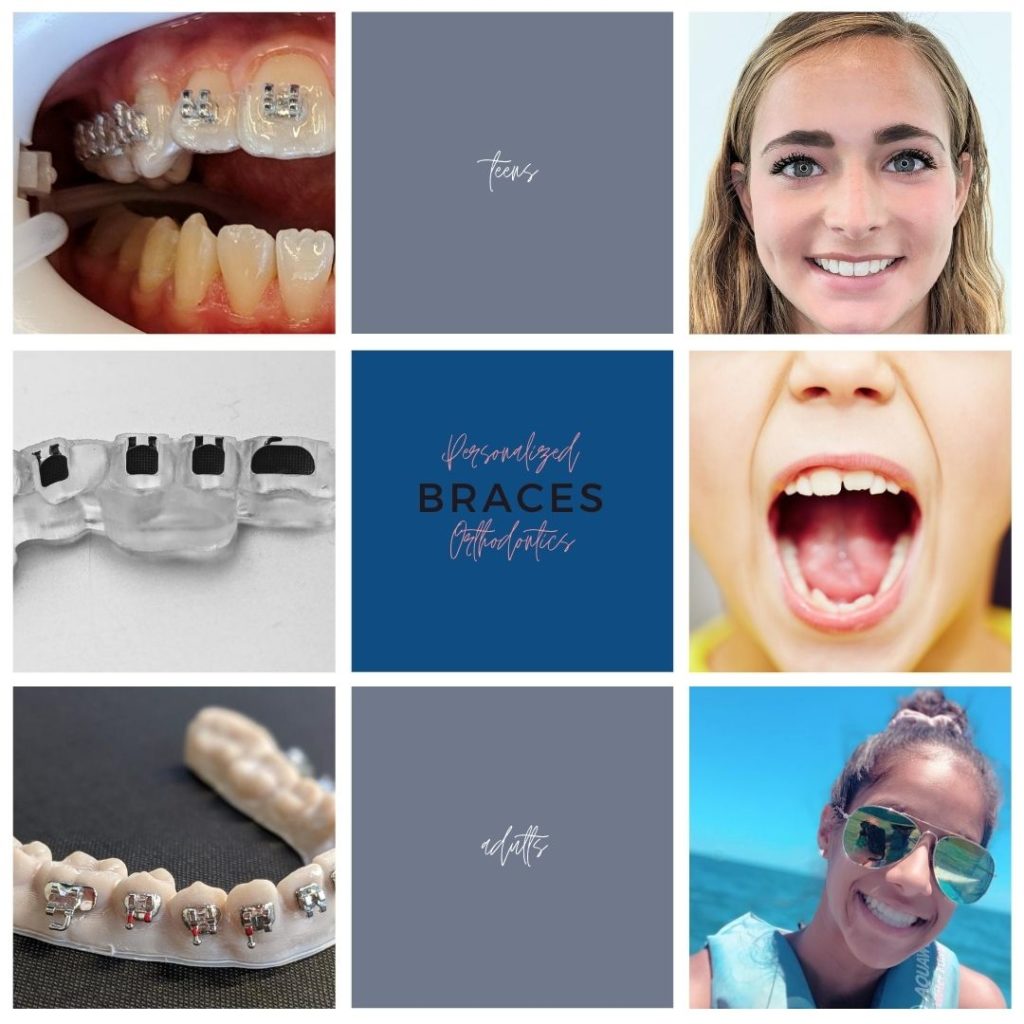The 15-Second Trick For Legacy Orthodontics
The 15-Second Trick For Legacy Orthodontics
Blog Article
Legacy Orthodontics Fundamentals Explained
Table of ContentsThe Facts About Legacy Orthodontics RevealedRumored Buzz on Legacy OrthodonticsAll About Legacy OrthodonticsLegacy Orthodontics Can Be Fun For EveryoneThe 6-Second Trick For Legacy Orthodontics
In addition, we supply flexible treatment schedules, flexible payment choices and an enjoyable, enjoyable experience.An orthodontist is a dentist trained to identify, prevent, and deal with teeth and jaw abnormalities. They remedy existing problems and are trained to identify issues that might establish in the future. Orthodontists work with individuals of every ages, from children to grownups. Individuals typically connect a best smile with healthiness.
Malocclusion, or misaligned teeth, can lead to oral issues, including tooth degeneration, gum tissue condition, and tough or painful eating. Not every person is born with straight teeth. If you have a bad bite or huge areas in between your teeth, you may wish to get in touch with a dentist focusing on orthodontic care.
The 2-Minute Rule for Legacy Orthodontics
( Picture Credit Report: DigitalVision/Getty Images) Orthodontists use taken care of and removable oral devices, like dental braces, retainers, and bands, to transform the placement of teeth in your mouth. Orthodontic treatment is for oral irregularities, consisting of: Uneven teethBite problems, like an overbite or an underbiteCrowded teeth or teeth that are also far apartJaw misalignmentThe goal of orthodontic treatment is to enhance your bite.
A healthy and balanced bite ensures you can eat, chew, and speak appropriately. While you might consider orthodontists as generally for youngsters or teenagers that require braces, they can correct dental problems at any kind of age. Orthodontists go to college, dental college, and orthodontic school. After graduation, they invest 2 or 3 years in an orthodontic residency program.
, but not all dental practitioners are orthodontists. They concentrate on two locations: Just how to properly and securely move teeth Exactly how to effectively assist development in the teeth, jaw, and faceOnce an orthodontist has finished training, they have the option to come to be board accredited.
Excitement About Legacy Orthodontics
Misalignment, or malocclusion, is the most usual reason individuals see an orthodontist. It is genetic and is the outcome of size differences in between the top and lower jaw or in between the jaw and teeth. Malocclusion brings about tooth overcrowding, a twisted jaw, or irregular bite patterns. Malocclusion is generally treated with: Your orthodontist connects steel, ceramic, or plastic square bonds to your teeth.
If you have only minor malocclusion, you may have the ability to make use of clear braces, called aligners, rather of traditional braces (https://trello.com/u/legacyortho). Some people require a headgear to help move teeth into line with pressure from outside the mouth. After dental braces or aligners, you'll require to use a retainer. A retainer is a custom-made tool that maintains your teeth in location.
They can develop added space in the mouth without having to draw teeth. Orthodontists utilize cords, medical screws, or plates to sustain your jaw bone.
You might require to see an orthodontist if you have: Crowding or not sufficient area for every one of your teethOverbite, when your upper teeth come over your bottom teethUnderbite, when your base teeth are too far forwardSpacing or problems with gapsCrossbite, which is when your top teeth fit behind your base teeth when your mouth is closedOpen bite or an upright space between your front base and top teethMisplaced midline, when the facility of your bottom and top teeth do not line up Fixing an oral malocclusion can: Make biting, chewing, and talking easierImprove the symmetry of our face and your total appearanceEase pain from temporomandibular joint disordersDifferent your teeth and make them simpler to this hyperlink cleanse, helping protect against tooth degeneration or cavities It's often a dental practitioner who initially notifications misaligned teeth throughout a regular exam.
The Facts About Legacy Orthodontics Uncovered

During your very first orthodontic appointment, you'll likely have: An oral examPhotos taken of your face and smileDental X-raysPanoramic (360 degree) X-rays of your face and headImpressions to produce mold and mildews of your teethThese tests will aid your orthodontist know how to proceed with your treatment. invisalign. An orthodontist is a dental professional that's had training to treat your teeth and jaw
An orthodontist is concentrated on your bite, so something like a broken tooth would certainly be managed by a dental practitioner. Orthodontists are focused on your bite, or the way your teeth fit with each other, and the straightness of your teeth.
Ever questioned how stars constantly seem to have completely lined up teeth? The solution commonly depends on the proficient hands of an orthodontist. What specifically does an orthodontist do? Orthodontists are oral specialists that concentrate on dealing with abnormalities in the teeth and jaws. Their competence goes beyond just creating a gorgeous smile; it expands to enhancing your overall dental wellness and feature.
7 Easy Facts About Legacy Orthodontics Shown

While braces are one of the most commonly acknowledged orthodontic treatment, orthodontists have a diverse toolkit at their disposal. The particular method selected relies on the extent of the situation, the client's age, and specific choices. These reliable dental braces use a system of brackets adhered to the teeth and connected by cables.
These removable trays are customized to gradually change the teeth's position. In situations of slim jaws, palatal expanders can be utilized to produce space for proper tooth positioning.
Report this page